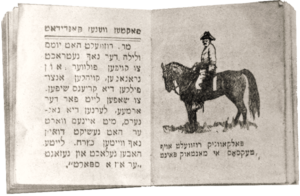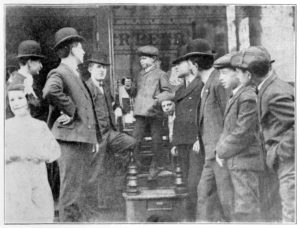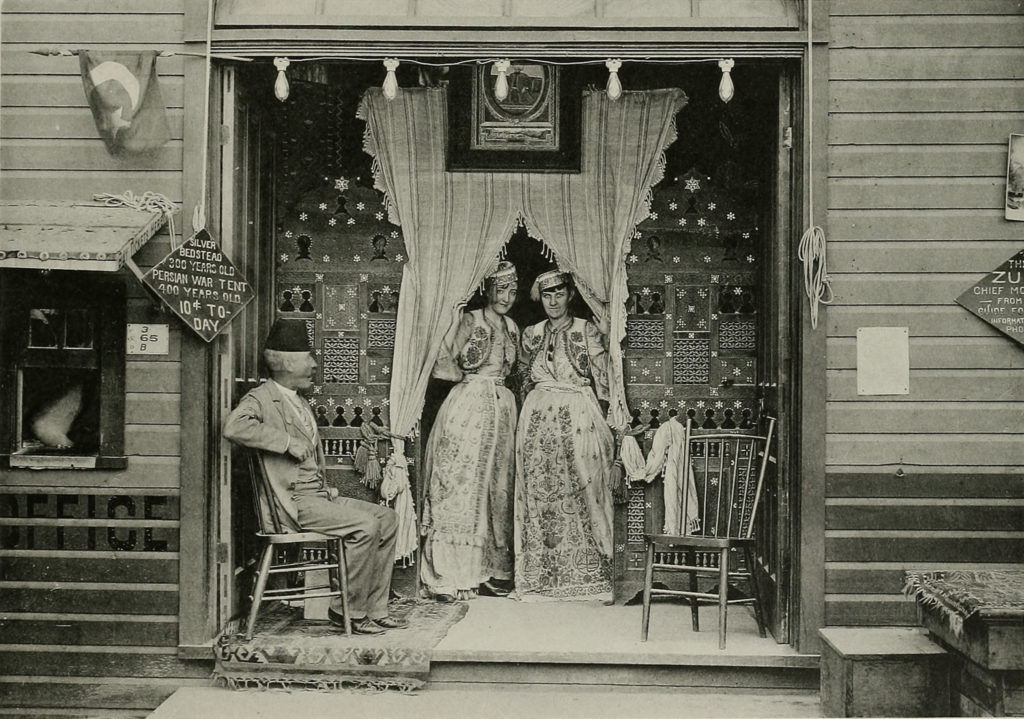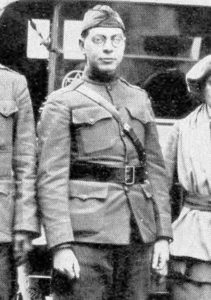When the 1904 presidential campaigns began, there were more than 1.5 million Jews in the U.S., most of whom had immigrated from Russia and Eastern Europe in the previous 25 years.
Politicians coveted the Jewish vote, and campaign materials had long since started to appear in Yiddish. Examples include this 1904 mini-biography of incumbent candidate Theodore Roosevelt, published in Chicago. (Photo from the June 1905 issue of the Jewish magazine New Era Illustrated.)
In the final month of the 1904 race, the same magazine ran the following article about young boys who were hired to stump for candidates on New York’s Lower East Side:
Boy Political Orators
EAST SIDE CHILDREN WHO PUBLICLY DISCUSS THE QUESTIONS OF THE DAY
New Era Illustrated, October 1904
ON LATE OCTOBER NIGHTS, in years when important elections are pending, New York’s East Side adds another queer sight to its already long list. Street corners, doorsteps and casual barrel-heads not infrequently present to the astonished stranger the spectacle of boys from ten to fifteen years old delivering with might and main speeches Democratic, Republican or Socialistic. Some of them should have been in bed hours ago, and in their waking moments should have concerned themselves with nothing more complex than the third reader and a baseball bat; yet there they stand, repeating like little parrots of phenomenal intelligence the stock phrases of their respective parties.
They talk as if they understood the meaning of the words, and if cornered by the interruption of a bystander, they will often, with a quick reply, turn the laugh against their opponent ; but Continue reading




